Challenges

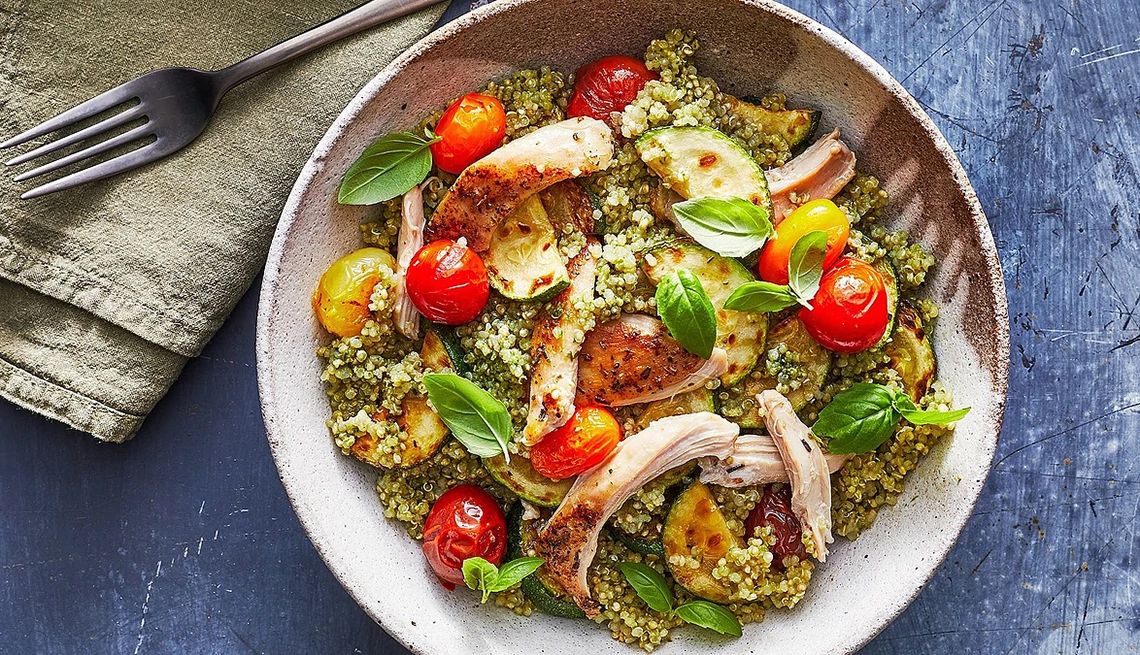
Help improve gut health and learn tips to reduce inflammation in this week-long meal plan.
While the gut's main function is to break down and digest the food we eat, growing research links a healthy gut microbiome to improved overall well-being. Studies have linked a less healthy and less diverse gut microbiome to greater risk for health conditions such as type 2 diabetes, irritable bowel syndrome (IBS), heart disease and even certain cancers.
Having a healthy gut and consuming a high-fiber diet may even be an important piece of healthy aging. A healthy gut with diverse bacteria can help reduce inflammation, while an unhealthy gut may increase it. Inflammation increases the risk of developing health conditions such as asthma, metabolic syndrome, inflammatory bowel disease (IBD) and atherosclerosis (hardening of the arteries due to plaque buildup).
How We Create Meal Plans
Registered dietitians thoughtfully create EatingWell’s meal plans to be easy-to-follow and delicious. Each meal plan meets specific parameters depending on the health condition and/or lifestyle goal it is targeting and is analyzed for accuracy using the nutrition database, ESHA Food Processor. As nutritional needs differ from person to person, we encourage you to use these plans as inspiration and adjust as you see fit.
More About This Meal Plan
In this seven-day meal plan, we combine forces by mapping out a week of meals and snacks that focus both on improving gut health and reducing inflammation. We include plenty of anti-inflammatory foods, such as dark leafy greens, deeply pigmented fruits and plenty of healthy fats from salmon, tuna, chia seeds and nuts. To support a healthy gut, we include at least 30 grams of fiber each day. Fiber is an important nutrient with a slew of health benefits but unfortunately, 93 percent of Americans aren’t reaching their fiber goals. To further support gut health, we include plenty of yogurt and kefir — two foods rich in probiotics that help diversify the gut microbiota.
As with all meal plans, it is not necessary to follow this exact routine. Make substitutions as desired and remember the core goal is to increase fiber and incorporate more gut-healthy and anti-inflammatory foods into your meals.
There are two calorie levels: 1,500 or 2,000 calories, depending on your calorie needs and satiety levels.
Strategies to Improve Gut Health:
Eat More Probiotic Foods: Probiotics are found in fermented foods and can help improve the gut microbiota by increasing the good bacteria present. Foods rich in probiotics include yogurt, kefir, kombucha, sauerkraut, tempeh, kimchi and miso.
Increase Prebiotic Foods: Prebiotics are fuel for probiotics and the bacteria in our gut, which helps increase healthy gut bacteria. Prebiotics are found in fiber-rich foods, such as raspberries, garlic, onions, artichokes, whole grains, beans, lentils, pears, and apples.
Reduce Inflammation: Reducing inflammation may help strengthen the gut’s barrier, which helps prevent harmful substances from passing through. Help reduce inflammation by focusing on nutrient-dense foods, getting enough sleep, managing stress and improving gut health.
Eat More Fiber: Fiber is the cornerstone nutrient for gut health. Eating more fiber-rich foods like fruit, vegetables, whole grains and legumes helps support a healthy gut by improving digestion and fueling gut-healthy bacteria.
Anti-Inflammatory Foods to Focus On:
- Fruit (berries, cherries, pomegranate, apples, pears, citrus fruits, plums and more)
- Nonstarchy vegetables (dark leafy greens, Brussels sprouts, cabbage, broccoli, cauliflower, beets, tomatoes and more)
- Starchy vegetables (such as potato, sweet potato, and winter squash)
- Beans and lentils
- Nuts and seeds, including natural nut butters (just nuts and salt in the ingredient list)
- Fish, specially higher-fat fish such as salmon, mackerel, tuna and sardines
- Whole grains (quinoa, whole wheat, bulgur, freekeh and more)
- Avocado
- Olive oil
- Herbs and spices
Meal-Prep Ideas
Set yourself up for success this week by getting some meal prep done in advance.
- Make Garlic Hummus to have as a snack throughout the week.
- Prepare Pumpkin Spice Energy Balls to have as a snack throughout the week.
- Make Ginger-Chicken Stew with Greens to have for lunch on Days 2 through 5.
Disclaimer:
Note: Consider speaking with your health-care provider about whether this plan is suitable for your individual nutrition needs.
1,500-Calorie Plan
Day 1

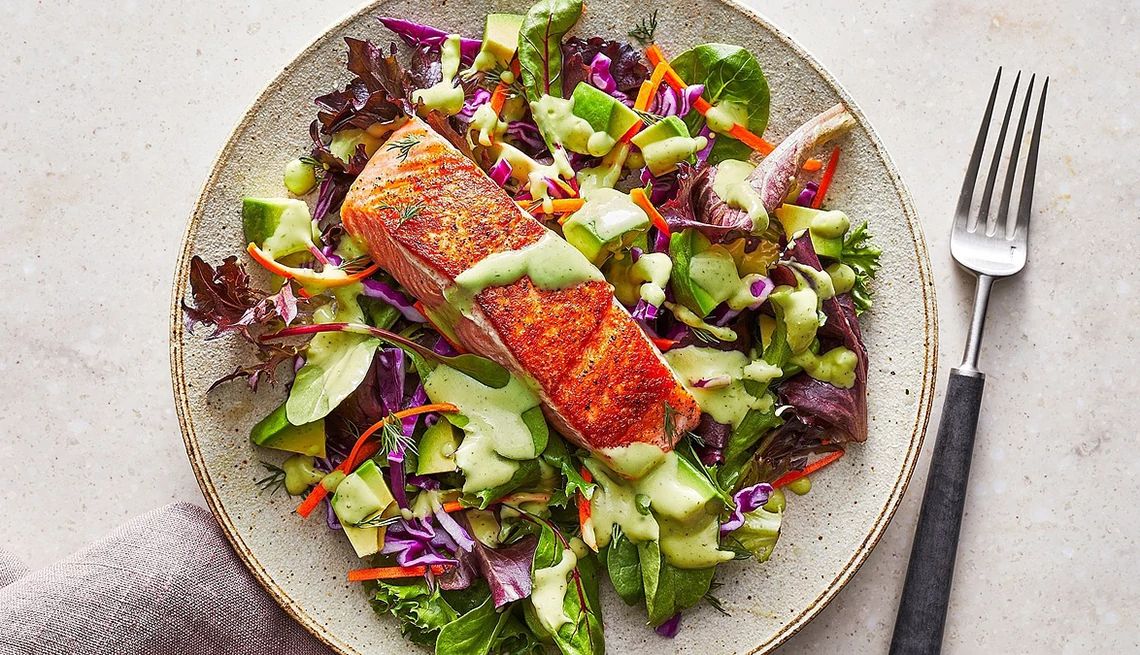
Breakfast (317 calories)
- 1 serving 10-Minute Spinach Omelet
- 1 medium orange
Lunch (430 calories)
P.M. Snack (66 calories)
- 1 ¼ cups sliced strawberries
Dinner (508 calories)
- 1 serving Salmon & Avocado Salad
Day 2


Breakfast (247 calories)
- 1 serving Strawberry-Peach Chia Seed Smoothie
A.M. Snack (242 calories)
- 1 serving Pumpkin Spice Energy Balls
Lunch (388 calories)
- 1 serving Ginger-Chicken Stew with Greens
- 1 medium bell pepper, sliced
- 1 serving Garlic Hummus
P.M. Snack (211 calories)
- 1 cup low-fat plain kefir
- 1 medium pear
Dinner (400 calories)
- 1 serving Pesto Chicken Quinoa Bowls
Day 3

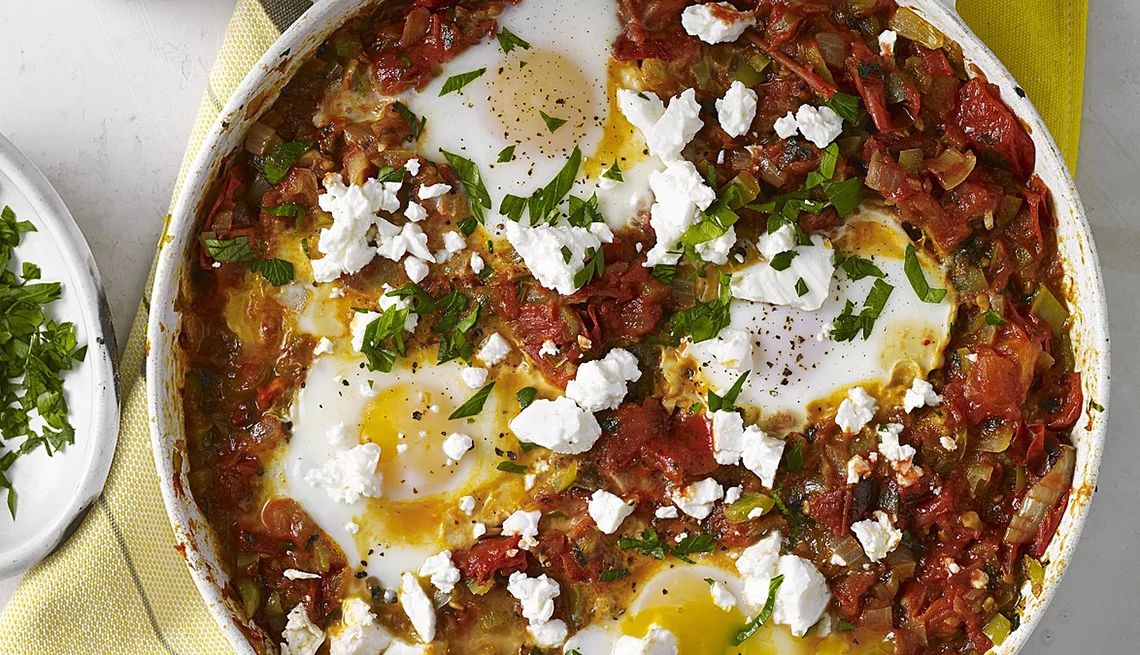
Breakfast (308 calories)
- 1 cup low-fat plain Greek-style yogurt
- 3 tablespoons sliced almonds
- ½ cup blueberries
A.M. Snack (131 calories)
- 1 large pear
Lunch (388 calories)
- 1 serving Ginger-Chicken Stew with Greens
- 1 medium bell pepper, sliced
- 1 serving Garlic Hummus
P.M. Snack (291 calories)
- 1 medium apple
- 2 tablespoons almond butter
Dinner (389 calories)
- 1 serving Shakshuka with Roasted Tomatoes (Eggs Poached in Roasted Tomato Sauce)
- 1 slice whole-wheat bread, toasted
Day 4

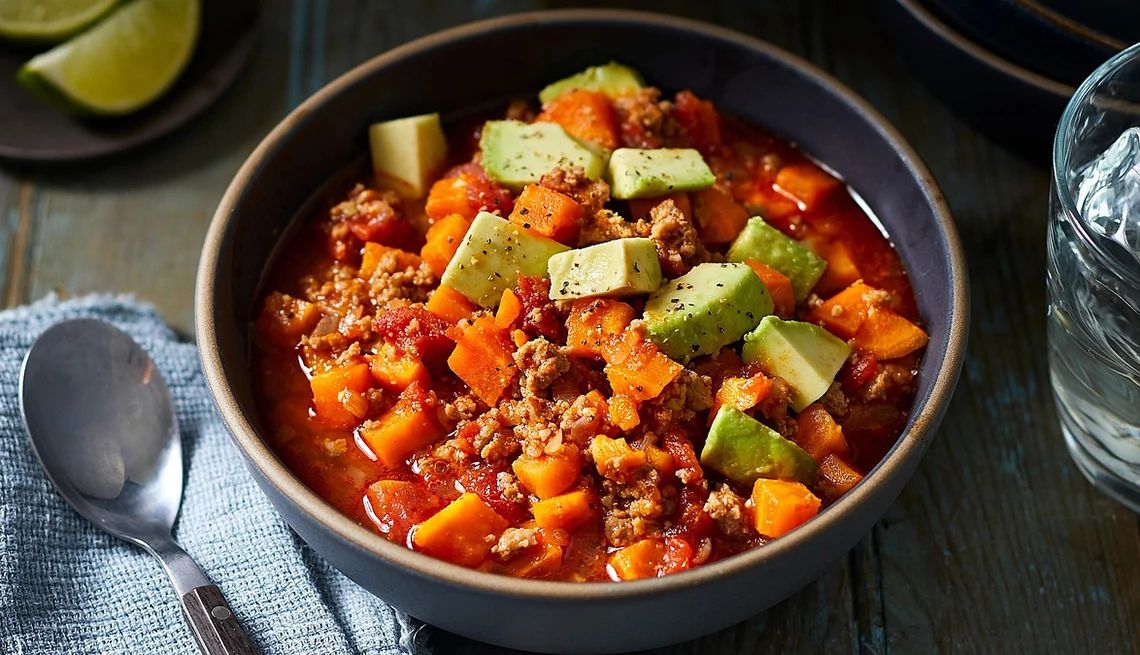
Breakfast (247 calories)
- 1 serving Strawberry-Peach Chia Seed Smoothie
A.M. Snack (242 calories)
- 1 serving Pumpkin Spice Energy Balls
Lunch (388 calories)
- 1 serving Ginger-Chicken Stew with Greens
- 1 medium bell pepper, sliced
- 1 serving Garlic Hummus
P.M. Snack (152 calories)
- 1 cup low-fat plain kefir
- ⅔ cup raspberries
Dinner (447 calories)
- 1 serving Turkey & Sweet Potato Chili
- 1 serving Guacamole Chopped Salad
Day 5

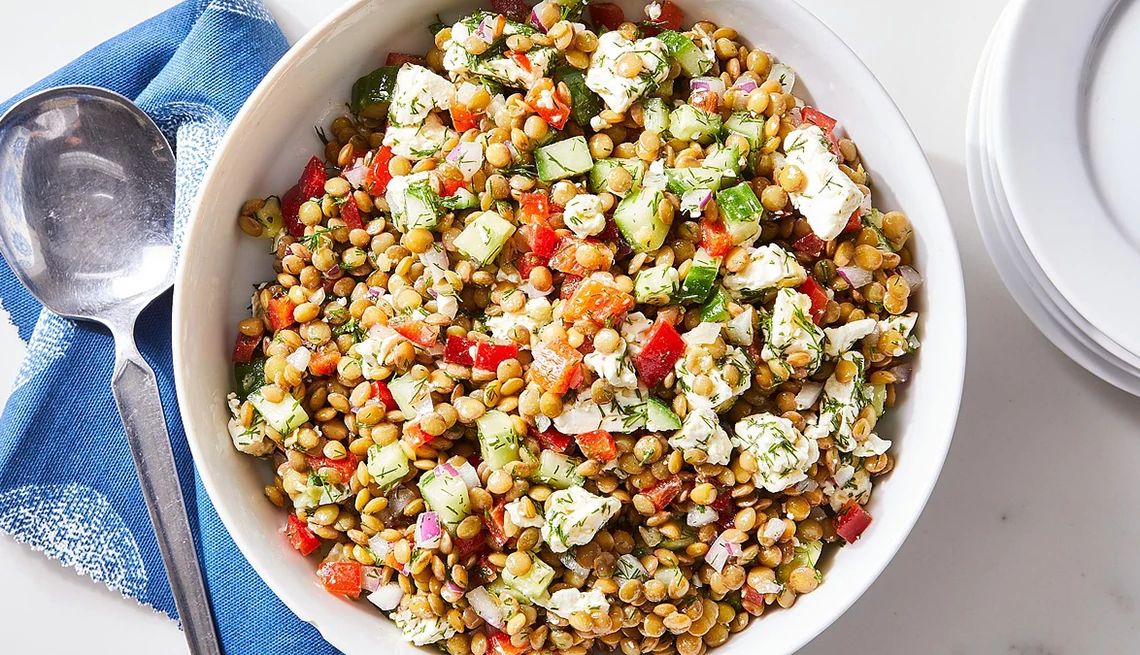
Breakfast (308 calories)
- 1 cup low-fat plain Greek-style yogurt
- 3 tablespoons sliced almonds
- ½ cup blueberries
A.M. Snack (131 calories)
- 1 large pear
Lunch (388 calories)
- 1 serving Ginger-Chicken Stew with Greens
- 1 medium bell pepper, sliced
- 1 serving Garlic Hummus
P.M. Snack (155 calories)
- ¼ cup unsalted dry-roasted almonds
Dinner (490 calories)
- 1 serving Grilled Harissa Chicken Thighs
- 1 serving Lemony Lentil Salad with Feta
Meal-Prep Tip: Reserve 2 servings Lemony Lentil Salad with Feta to have for lunch on Days 6 and 7.





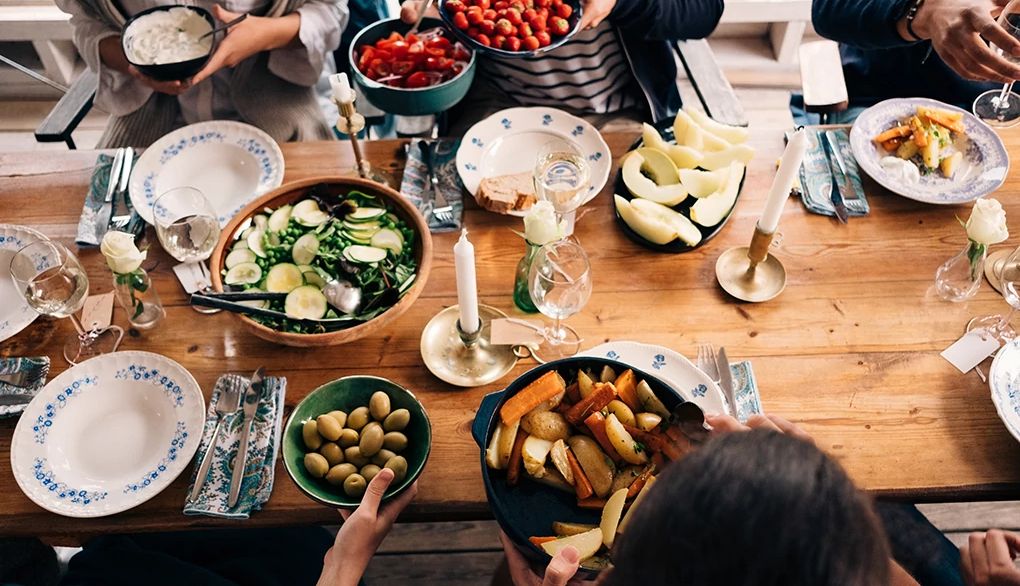

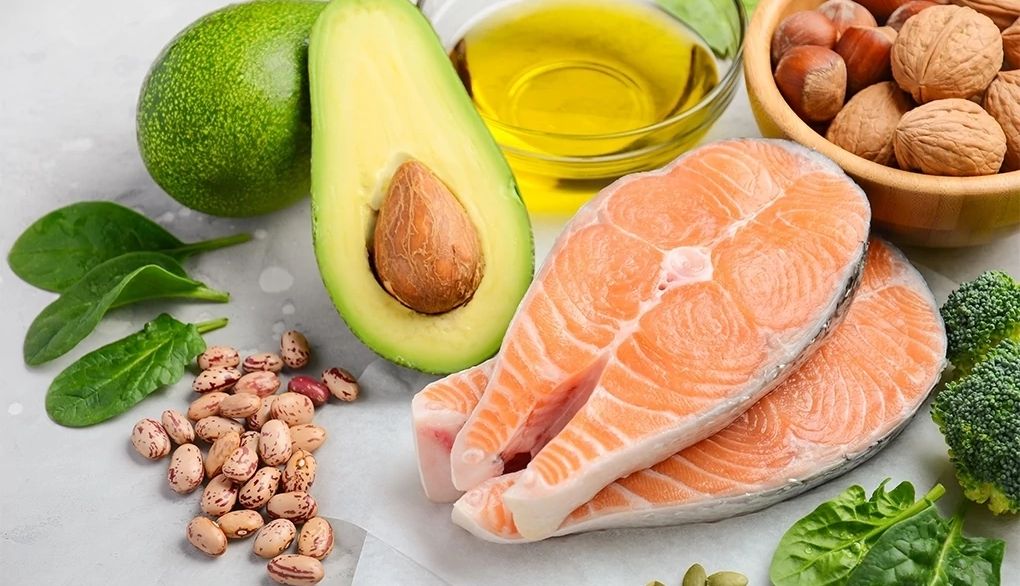
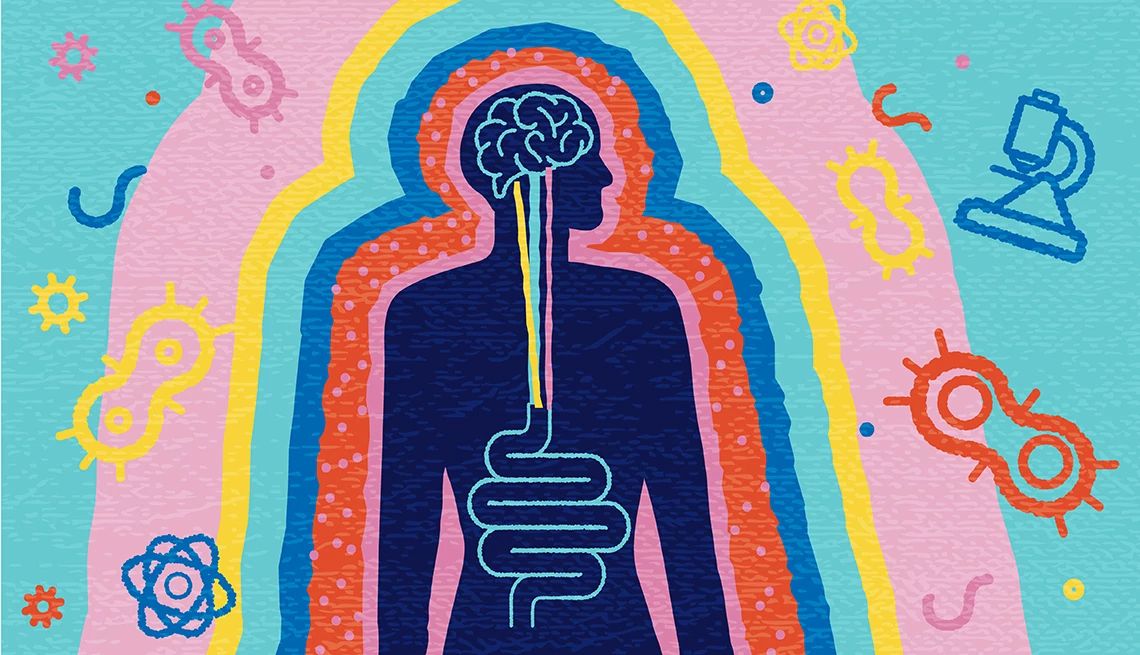
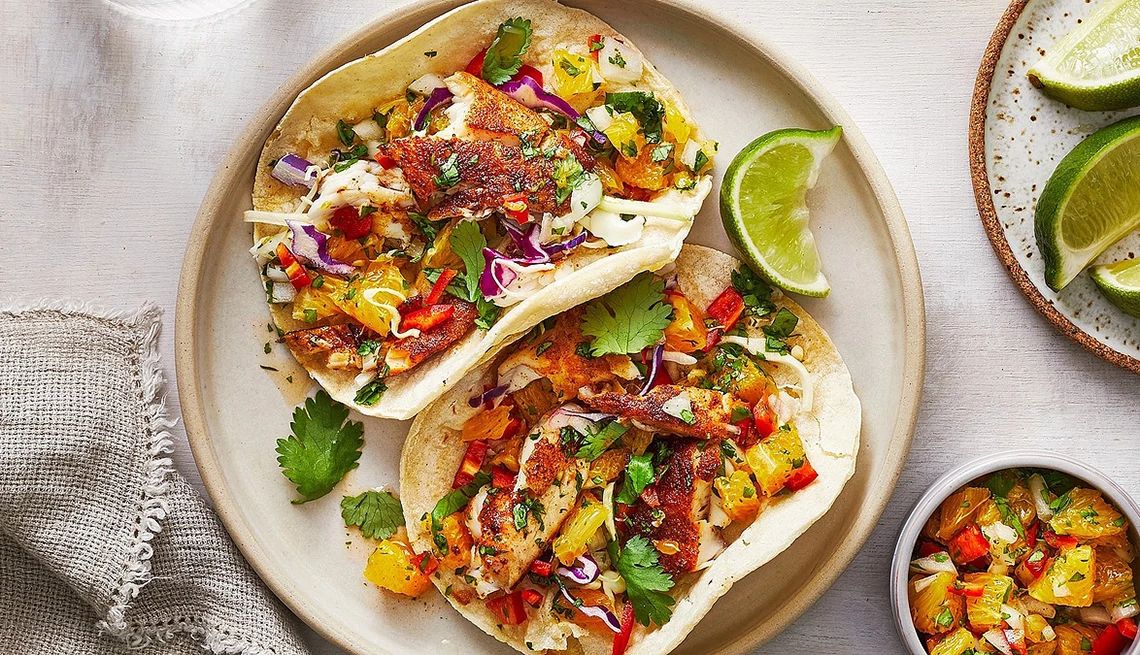
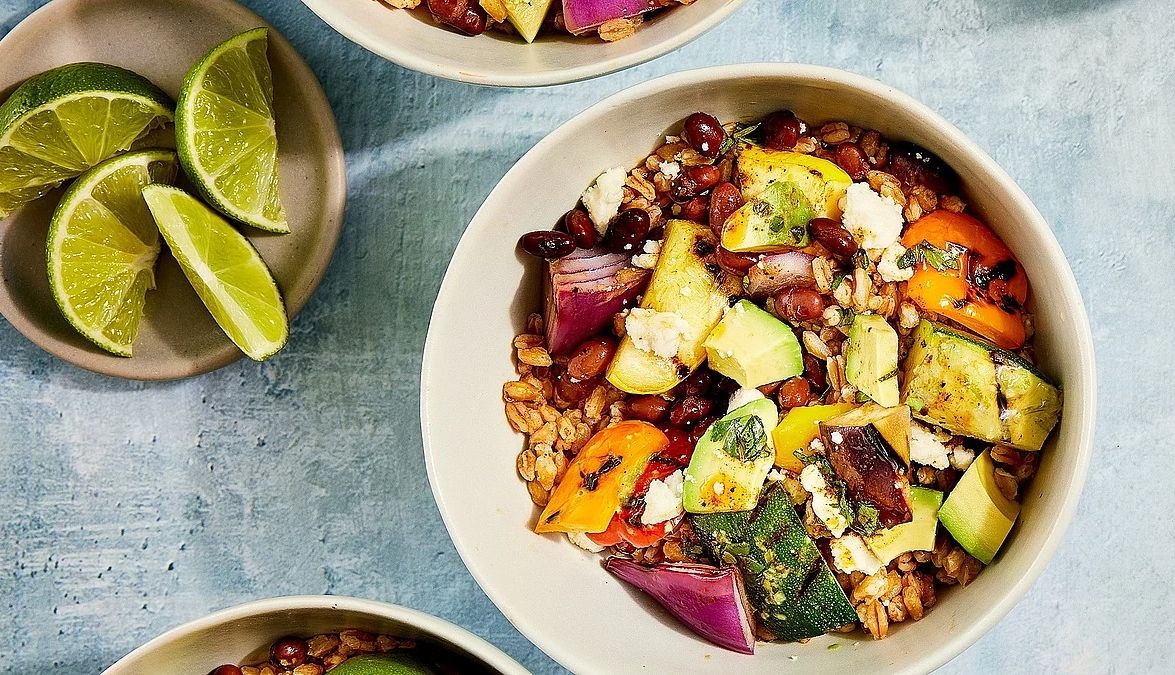





More From Staying Sharp
7-Day Meal Plan to Help Improve Cholesterol Levels
Learn how to improve your heart health and lower your cholesterol
Snacks for Fuel Before and After a Workout
Make smarter snack time choices
Make Mealtime More Hydrating
Fruits and vegetables for the win!